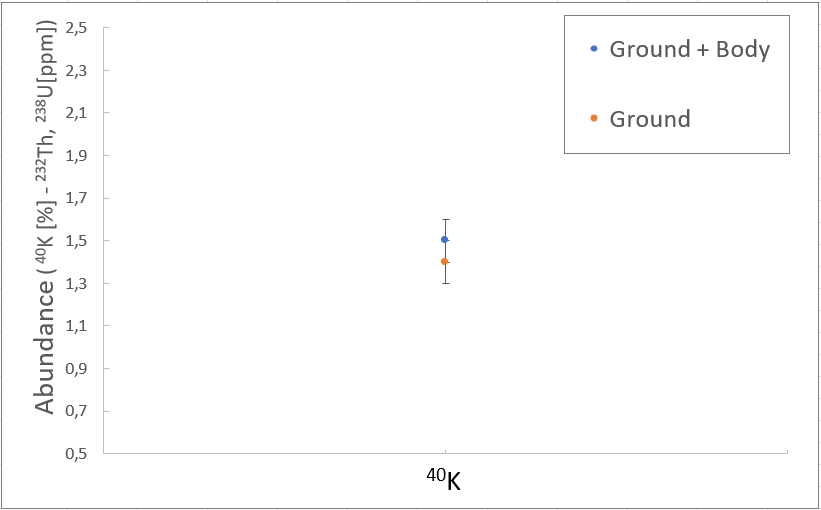| Difficult | Execution Time | Data Analysis | Radioactive Sources |
|---|---|---|---|
| Yes | No |
Equipment:
Purpose of the experiment:
The purpose of the experiment is to become aware of the radioactivity of the human body.
Fundamentals:
Potassium is essential to all living beings, including humans, where it’s found especially in the muscle tissue. It can be found in most soils, building materials, plants and animals and it is typically used in fertilizers.
In nature there are only three isotopes of potassium: 39K (93.3% of weight abundance), 41K (6.7%) and 40K (0.0117%). While 39K and 41K are stable, 40K is a radioactive isotope with a half-life of 1.28*109 years and it is one of the most common responsible for the so-called terrestrial radiation.
Considering the relative abundance, only twelve of a hundred thousand potassium atoms are actually radioactive, i.e. approximately for 1 g of potassium, 31 nuclei decay per second [ ~ 31 Bq /g]. This fact implies that one banana of 150 g contains about 525 mg of potassium which corresponds to ~16 Bq activity, and similarly, an adult man (70 kg) has about 140 g of potassium which corresponds to ~ 4400 Bq.
40K decays 89.3% of the time to the ground state of 40Ca by pure β-emission and 10.7% of the time by electron capture to an excited state of 40Ar which then decays γ reaching the stability. The emitted photon has an energy of 1460.86 keV and can be used in order to identify and quantify the activity concentration of 40K in sites of measurement and in the environmental samples.
Requirements:
No other tool is needed.
Carrying out the experiment:
Power on the γstream inside the red backpack. Power on the tablet and associate the two devices via Bluetooth. Take care that the γstream internal battery is charged, otherwise use the external power system.
Start the experiment by placing the backpack on the ground and be sure that your presence is far enough from the measure point not to be revealed (A). Set the acquisition time to about 5 minutes and see the results. If the statistic is not enough increasing the acquisition time. Repeat the measurements leaving the backpack in the same position together with just your presence or more (B).

Results:
The measurements results show how the detection of the 40K in situ is dependent of the human presence weakly.

Experimental result of in-situ γ-ray coming from 40K [1460 keV] with and without people presence.


